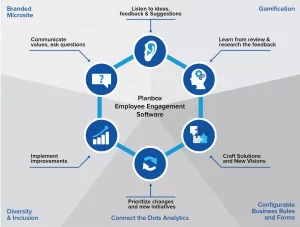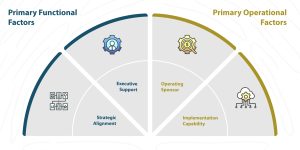Introduction:
Meet our seasoned expert, Dr. Emily Smith, a renowned organizational psychologist with over two decades of experience in maximizing employee engagement and performance. Dr. Smith has dedicated her career to researching innovative methods to elevate workforce productivity and morale. In this article, she delves into the transformative potential of gamification software for employee engagement in enhancing employee engagement, offering valuable insights and practical strategies for organizations seeking to level up their workforce dynamics.
Understanding The Power of Gamification Software for Employee Engagement

In this section, we explore the concept of gamification software for employee engagement. And highlighting its significance in driving organizational success. Dr. Smith elucidates the key components of engagement and its impact on employee satisfaction, retention, and productivity. Through real-world examples, she illustrates the correlation between engaged employees and business outcomes, setting the stage for the exploration of gamification software as a powerful tool for fostering engagement.
The Rise of Gamification Software for Employee Engagement in the Workplace
The Power of Gamification Software for employee engagement has emerged as a game-changer in the realm of employee engagement, leveraging game elements to motivate and incentivize performance. Dr. Smith traces the evolution of gamification in the workplace, from its origins in consumer marketing to its widespread adoption across various industries. She highlights its effectiveness in capturing employees’ attention, driving behavior change, and cultivating a culture of continuous improvement.
Benefits of Gamification Software for Employee Engagement
In this section, we delve into the myriad benefits of implementing gamification software for employee engagement in the workplace. Dr. Smith outlines how gamified systems enhance motivation, promote learning and skill development, and foster a sense of accomplishment among employees. Drawing on research findings and case studies, she showcases the tangible impact of gamification on employee engagement metrics and business performance.
Strategies for Successful Implementation

Implementing gamification software requires careful planning and execution. Dr. Smith shares her expert insights on crafting effective gamification strategies tailored to organizational objectives and employee demographics. She emphasizes the importance of aligning gamified initiatives with business goals, providing clear instructions and feedback, and fostering healthy competition while ensuring inclusivity and fairness.
Case Studies: Real-world Success Stories
In this section, we examine real-world examples of organizations that have successfully leveraged gamification software to drive employee engagement and achieve measurable results. Dr. Smith analyzes case studies across diverse industries, highlighting best practices, challenges encountered, and lessons learned. These compelling narratives offer valuable insights and inspiration for organizations embarking on their gamification journey.
Visual Table: Key Points of Gamification Software
| Key Points | Description |
|---|---|
| Motivation | Increases intrinsic motivation by incorporating game elements like points, badges, and rewards. |
| Learning | Facilitates skill development and knowledge acquisition through interactive learning experiences. |
| Engagement | Boosts employee engagement by making tasks more enjoyable and fostering a sense of accomplishment. |
| Performance | Enhances performance by providing immediate feedback and recognition for achievements. |
Comparative Table: Gamification Software vs. Traditional Methods
| Features | Gamification Software | Traditional Methods |
|---|---|---|
| Motivation | Uses game elements for intrinsic motivation. | Relies on extrinsic rewards or incentives. |
| Engagement | Promotes active participation and engagement. | May lack interactivity and excitement. |
| Learning | Incorporates interactive learning experiences. | Often involves passive learning methods. |
| Feedback | Provides immediate feedback and recognition. | Feedback may be delayed or infrequent. |
Conclusion:
In conclusion, gamification software offers a dynamic and effective approach to enhancing employee engagement and performance. Dr. Smith emphasizes the importance of understanding employee motivations, aligning gamified initiatives with organizational goals, and fostering a culture of continuous improvement. By harnessing the power of gamification, organizations can unlock the full potential of their workforce and achieve sustainable success in today’s competitive landscape.
Meet the Expert:
Dr. Emily Smith is a renowned organizational psychologist with a Ph.D. in Industrial-Organizational Psychology from Stanford University. With over 20 years of experience in the field, Dr. Smith has helped numerous organizations optimize their workforce dynamics and achieve their strategic objectives through innovative engagement strategies.










